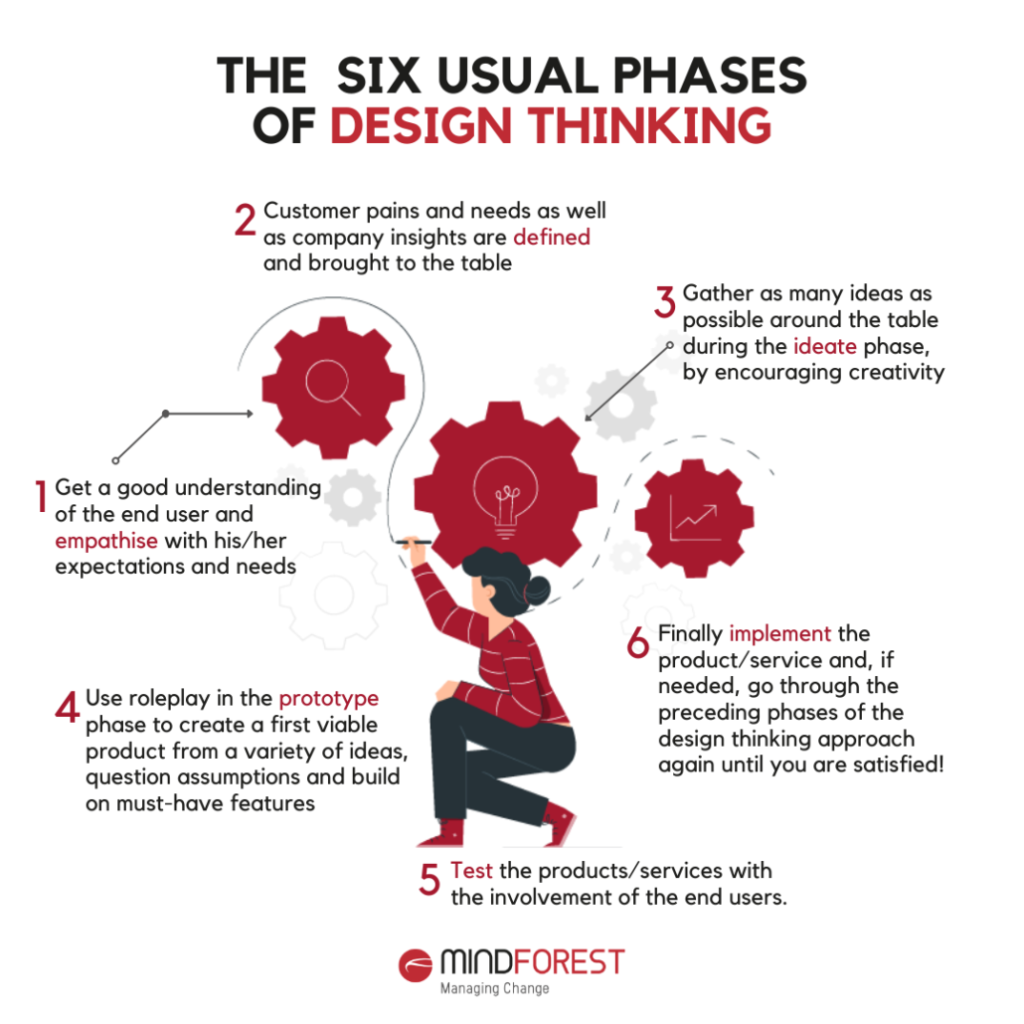Design thinking – just a buzz word or an opportunity for everyone?
Develop a design thinking mindset
Questioning yourself – and doing so several times, as is the case in an iterative process – is difficult. In a sense, you are admitting to yourself that the decisions you made beforehand may not have been the right ones; self-criticism is the order of the day. An iterative approach to problem solving goes hand in hand with getting rid of silo working.
Design thinking follows the philosophy that one should first deal extensively with the problem before finding the appropriate solution. Falling in love with the problem instead of falling in love with the solution is the key to success.
Falling in love with the problem instead of falling in love with the solution is the key to success.
To put this into practice, the first step is to get a good understanding of the end user and to empathise with his/her expectations and needs. Surveys, interviews or even joint workshops with user groups are good ways of getting to know them as well as possible. The particularly difficult thing about this phase is to lay down the corporate view on the questions in hand and actively listen to users without engaging too much in the hunt for possible solutions. Unconsciously, people tend to fall into known behaviour patterns; this is understandable, since leaving one’s own comfort zone is a tricky thing to do.
The respective Design Thinking phases do not have to run sequentially but can blend into each other. This is precisely what gives the entire approach its iterative character; the individual phases can be repeated at numerous times in order to incorporate newly gained insights. In the define phase, customer pains and needs as well as company insights are brought to the table. The aim is to write human-centric problem statements by referring to the insights from the empathise phase.
Brainstorming is particularly useful in the ideate phase, when the aim is to gather as many ideas (some of them may seem radical) as possible around the table. MindForest’s project experience shows that many companies find it difficult to put aside their inhibitions and fully follow the slogan “impossible is nothing”. We should keep in mind that a feasibility analysis will take place at a later stage…
During this phase, the company’s creativity should be encouraged to its full potential.
Find out more about how you can foster collective intelligence at your company by (re-)reading our article “Focus sur l’Intelligence Collective”.
Take a step back, adjust, iterate
Roleplay is a popular change management technique to reveal to employees what their colleagues have to deal with on a daily basis. The same technique can also be used in the prototype phase, where the aim is to create a first viable product from a variety of ideas. The roleplay technique mentioned above helps to question assumptions and build on must-have features.
As already mentioned, this is a customer-centric approach; the testing of the products/services in question should therefore take place with the involvement of the end users. Did we hit the bull’s eye with the prototype? Great! We can think about the implementation phase. Are we completely off the mark? We’ll react iteratively and go through the preceding phases of the design thinking approach again to find the source of the error.
What makes this approach so appealing?

In the course of our projects, we have found that the application of DT has made it possible to use disruptive approaches to identify potential solutions, which the customers were able to incorporate quickly into their service portfolio. Above all, it was interesting for the companies concerned to approach a problem in a non-traditional way; the “escape” from every day life definitely had a positive effect on the creativity of the participants.
WANT TO RECEIVE OUR LATEST THOUGHT LEADERSHIP CONTENT?
Related posts
 Digital Transformation and Change Management: Lessons shared in an event hosted by Cebi and MindForest
Digital Transformation and Change Management: Lessons shared in an event hosted by Cebi and MindForest
 Can Engagement Help Reduce Absenteeism?
Can Engagement Help Reduce Absenteeism?
 Daring to Lead Positive Transformation: What If you explored a disruptive approach to Change with Appreciative Inquiry?
Daring to Lead Positive Transformation: What If you explored a disruptive approach to Change with Appreciative Inquiry?
 Have you Examined the Advantages of Working with Data Analytics yet?
Have you Examined the Advantages of Working with Data Analytics yet?
 Daring to Lead Positive Transformation: How can you implement and manage positive change with success?
Daring to Lead Positive Transformation: How can you implement and manage positive change with success?




